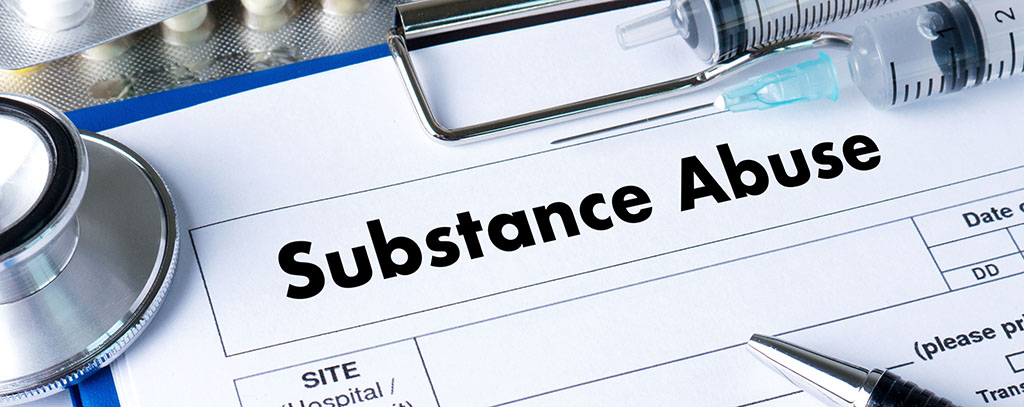


Drug Testing in Schools: Balancing Privacy and Safety Insights
June 25, 2023


The Pros and Cons of Random Drug Testing in the Workplace
June 26, 2023Substance misuse drug testing is a significant technique for recognizing and controlling the utilization of illicit drugs. This essential procedure aids both healthcare providers and employers in making informed decisions about treatment plans and workplace safety.
In this blog post, we examine the role of substance abuse drug testing in treatment programs and its associated benefits. We'll explore its benefits, particularly within treatment programs where it plays a pivotal role in monitoring patient progress.
We will also discuss various types of drug tests utilized in these programs, each with their unique advantages. Furthermore, we acknowledge that there are challenges associated with drug testing - from false positives to privacy concerns.
Finally, our present study offers best practices for implementing effective and ethical substance abuse drug testing procedures within your organization or treatment program.
Table of contents
- Understanding Substance Abuse Drug Testing
- Benefits of Drug Testing in Substance Abuse Treatment Programs
- Types of Drug Tests Used in Substance Abuse Treatment Programs
- Challenges of Drug Testing in Substance Abuse Treatment Programs
- Best Practices for Implementing Drug Testing in Substance Abuse Treatment Programs
- FAQs in Relation to Substance Abuse Drug Testing
- Conclusion
Understanding Substance Abuse Drug Testing
Substance abuse drug testing is a critical component of any comprehensive treatment program. It provides essential information about an individual's substance use, helping healthcare providers to tailor their approach and monitor progress throughout the recovery process.
The primary purpose of drug testing in substance abuse treatment programs is not punitive but therapeutic. It serves as a tool for holding individuals accountable for their sobriety and encouraging honest communication between patients and caregivers.
A Brief Overview of Drug Testing Procedures
In most cases, drug tests are conducted using urine samples, though other biological specimens like blood, hair, or saliva may also be used depending on the circumstances. The collected sample is then analyzed for traces of specific drugs or metabolites (substances produced when the body breaks down drugs).
The Role of Drug Tests in Treatment Programs
Drug tests play several crucial roles within a substance abuse treatment program:
- Detection: Identifying whether an individual has been using substances can help determine if they need intervention or support.
- Motivation: Regular drug testing can motivate individuals to stay sober since they know that relapses will be detected.
- Evaluation: By tracking changes in an individual's test results over time, clinicians can assess how well the current treatment plan is working and make necessary adjustments.
Sensitivity & Specificity: Key Concepts in Drug Testing
A good drug test should boast elevated perplexity and higher randomness, so as to correctly identify both those with the condition and those without. These two factors greatly influence how reliable and useful a test result will be in guiding patient care decisions.
It's important for companies purchasing drug testing supplies from Halux Diagnostic, or similar providers, to understand legal considerations around consent, confidentiality, and reporting requirements associated with workplace-based programs.
Benefits of Drug Testing in Substance Abuse Treatment Programs
Drug testing has revolutionized substance abuse treatment programs, presenting a range of advantages to both patients and organizations. Let's dive into some of these advantages.
Aiding Accountability
The first perk is that drug testing fosters accountability among those in treatment. Regular tests provide an objective measure of adherence to recovery plans, helping patients stay on track towards sobriety.
Promoting Safety
Secondly, drug testing promotes safety by identifying ongoing substance use early on. This can prevent potential health crises and ensure that appropriate interventions are put into place promptly. Check out SAMHSA for more information.
Supporting Effective Treatment Planning
The third advantage lies in its contribution to effective treatment planning. Drug test results can inform adjustments needed for individualized treatment plans, whether that means changing therapies or addressing co-occurring mental health issues.
Evidence-Based Decision Making
Last but not least, drug testing supports evidence-based decision making within substance abuse treatment programs. Data collected through regular testing can help identify trends and patterns that could lead to improvements in overall program efficacy.
Incorporating routine drug screening as part of a comprehensive approach to addiction recovery offers tangible benefits for everyone involved. It aids personal accountability, promotes safety among patients, and provides invaluable data that drives better decision-making at every level within a substance abuse treatment program.
Types of Drug Tests Used in Substance Abuse Treatment Programs
When it comes to keeping tabs on substance abuse, there are various drug tests that can be used depending on the specific needs of each treatment program. Knowing the different types is crucial for implementing an effective testing strategy.
Urine Testing
The most common type of drug test used in substance abuse treatment programs is urine testing. Urine testing is capable of identifying certain drugs or their metabolites in a person's system. Urine tests are non-invasive, relatively inexpensive, and provide quick results making them ideal for regular monitoring.
Blood Testing
Blood tests, while more intrusive and expensive than urine checks, offer exact estimations concerning the measure of substances present in somebody's body at the time of testing. They're typically used when there's a need for detailed information about an individual's drug use history.
Hair Follicle Testing
A hair follicle test provides insight into long-term patterns of substance use as it can detect certain drugs up to 90 days after consumption. However, this method does not reveal recent usage (within approximately one week) due to hair growth rates.
Sweat Patch Testing
This form involves wearing a patch that absorbs sweat over several days or weeks; any drugs consumed during this period will be detected through laboratory analysis. Sweat patches are particularly useful for continuous monitoring but may yield false positives if contaminated externally.
Mouth Swab/Oral Fluids Test
An oral fluids test uses saliva collected from inside an individual's mouth to detect current intoxication levels rather than historical usage patterns - providing valuable real-time data regarding potential impairment risks associated with active substance misuse.
Each type has its own strengths and limitations which should be considered carefully when designing your company's approach towards substance abuse drug testing.
Challenges of Drug Testing in Substance Abuse Treatment Programs
Drug testing is crucial in substance abuse treatment programs, but it comes with challenges. Understanding these issues can help companies implement effective strategies.
Potential for False Results
The accuracy of drug tests is essential, but there's always a risk of false positives or negatives. Certain medications or foods may trigger false positives, while some substances might not be detected at all, leading to false negatives.
Lack of Comprehensive Coverage
No single test can detect every possible substance that an individual might use or abuse. This means that even if a person passes one type of test, they could still be using other undetected substances.
Invasion of Privacy Concerns
Drug testing often involves collecting personal biological samples like urine or hair, which raises privacy concerns among individuals undergoing the process. Companies must respect their employees' rights while ensuring safety and compliance within the workplace.
Cost Implications
Frequent drug testing can have significant cost implications, especially when dealing with large groups of people over extended periods. Companies must balance maintaining efficient monitoring systems and managing costs effectively.
Best Practices for Implementing Drug Testing in Substance Abuse Treatment Programs
Implementing drug testing in substance abuse treatment programs can be tough, but with the right approach and adherence to best practices, it can be an effective tool for recovery. Here are some guidelines to ensure success:
Create Clear Policies and Procedures
Specify testing requirements, substances to be screened for, and the consequences of positive results in order to ensure successful implementation of drug-testing policies. Policies should also cover patient consent procedures.
Select Appropriate Tests
Choose appropriate tests based on your patients' needs and circumstances. Different drugs of abuse require different types of tests.
Maintain Confidentiality
Respect patient privacy rights under HIPAA laws by keeping all test results confidential.
Use Results Constructively
Instead of using positive test results punitively, use them as triggers for supportive interventions such as counseling or changes in treatment plans.
Incorporate Continuous Education
Educate staff members about addiction complexities and patients about the purpose behind drug testing to foster understanding and cooperation throughout the process.
For more resources on implementing successful substance abuse drug testing programs, check out SAMHSA.
Remember, while these practices provide general guidance, each organization may need to tailor its approach based on specific circumstances or requirements.
FAQs in Relation to Substance Abuse Drug Testing
What is drug testing and why is it important?
Drug testing is the process of analyzing biological specimens to detect the presence of illicit drugs or prescription medications. It is an important tool in treating drug addiction as it helps to monitor progress and ensure compliance with treatment plans.
What are the benefits of drug testing?
Drug testing can help identify drug use, prevent relapse, and improve treatment outcomes. It can also provide a sense of accountability and support for those in recovery.
What are the challenges of drug testing?
False positives, privacy concerns, and the cost of testing are all challenges associated with drug testing. Additionally, some individuals may feel stigmatized or resistant to testing.
What is the present study on drug testing?
There are ongoing studies exploring the effectiveness of drug testing in various settings, including workplaces and schools. These studies aim to improve drug testing methods and increase understanding of substance abuse.
Conclusion
Substance abuse drug testing plays a crucial role in treatment programs by tailoring approaches and monitoring progress. The tests, typically using urine samples, promote accountability, encourage sobriety, and aid in evaluating treatment effectiveness.
Sensitivity and specificity are important factors for reliable test results. Companies should be aware of legal considerations when purchasing drug testing supplies. Drug testing offers benefits such as accountability, safety, effective treatment planning, and evidence-based decision making. Different types of tests, including urine, blood, hair, sweat patch, and oral fluids tests, have their strengths and limitations.
Challenges include false results, lack of comprehensive coverage, privacy concerns, and cost implications. Implementing best practices, such as clear policies, appropriate test selection, confidentiality, constructive use of results, and continuous education, can ensure successful drug testing programs. Ongoing studies further enhance understanding and improve drug testing methods.





